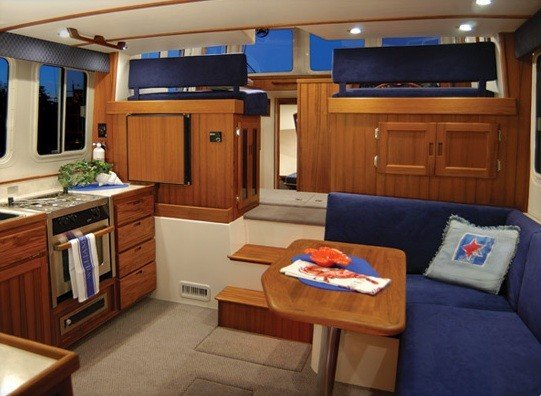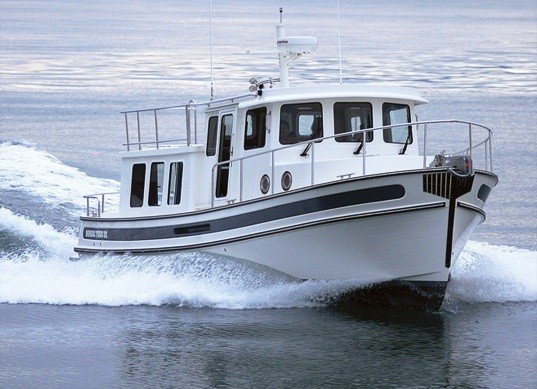We are looking at three trawlers, a 1979 Defever 40 with twin Perkins, 1976 Thompson with twin 453 Detroit's, and 1982 Ocean Alexander 43 with a single 120Lehman. I would like to hear from people with first hand experience with these boats. What kind of fuel economy do you get when you taking it easy? The Defever and OA were designed by reputable architect where the Thompson's selling point is it is built on a shrimp boat hull. (I can find nothing about Thompson 44 shrimp boats on the net).
As far as layout and roominess*we like the Thompson, Build quality would be both the Thompson and Defever as the best.
The Defever is in*good shape, the Thompson in fair shape and the OA in very poor shape. Rot is the best word to describe the OA. Rotten wood on the inside from leaky hatches and windows, I suspect rotten fuel tanks, and the raw water system is rotted from electrolysis.
Keep in mind I will be doing the work myself, and I like to do it.
I would like opinions on these boats.
Thanks.
As far as layout and roominess*we like the Thompson, Build quality would be both the Thompson and Defever as the best.
The Defever is in*good shape, the Thompson in fair shape and the OA in very poor shape. Rot is the best word to describe the OA. Rotten wood on the inside from leaky hatches and windows, I suspect rotten fuel tanks, and the raw water system is rotted from electrolysis.
Keep in mind I will be doing the work myself, and I like to do it.
I would like opinions on these boats.
Thanks.



